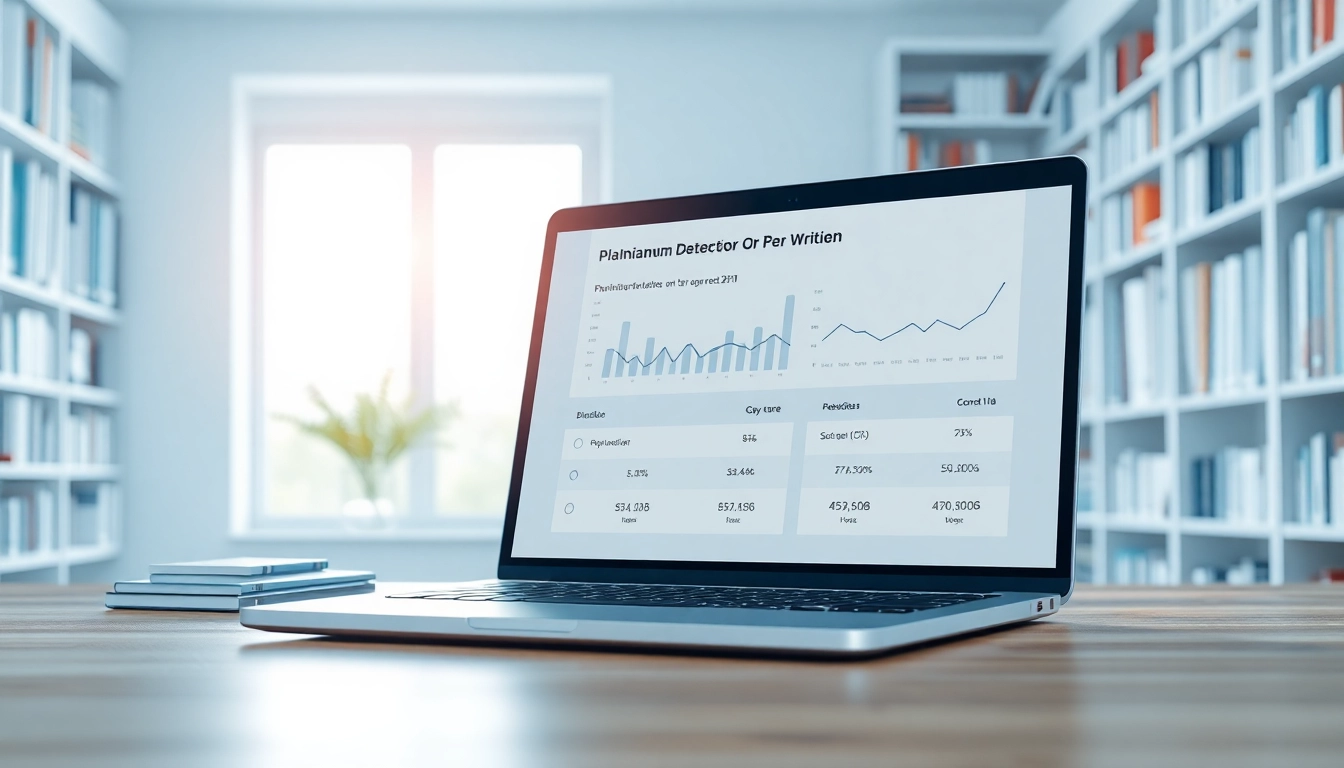Understanding Plagiarism Detection
What is a Plagiarism Detector?
A plagiarism detector is a tool used to identify instances of plagiarism in written work. This technology serves as a crucial resource for students, educators, and professionals alike, helping to ensure that the originality of content is maintained. At its core, a plagiarism detector scans text for similarities to existing works, highlighting copies, paraphrased content, and citations to ensure proper attribution.
How Do Plagiarism Detectors Work?
Plagiarism detectors employ sophisticated algorithms and extensive databases to check for duplicate content. Here’s a breakdown of how they function:
- Text Input: The user inputs text into the detector, which could be anything from a few sentences to a full-length paper.
- Database Comparison: The tool compares the input text against an extensive database that includes academic papers, articles, books, and online content to identify any matches.
- Similarity Detection: Algorithms analyze the text to detect matches. They look for both exact phrases and paraphrased concepts.
- Report Generation: After processing, the detector generates a report outlining the percentage of the text that is original and identifying the sources of any detected similarities.
Common Myths About Plagiarism Detection
Despite growing awareness, several myths about plagiarism detection persist. Here are a few debunked misconceptions:
- Myth 1: All plagiarism detectors are the same.
- Myth 2: Plagiarism can only be committed by copying text verbatim.
- Myth 3: Using synonyms is sufficient to avoid plagiarism.
It’s essential to understand these myths to fully appreciate the functionalities of plagiarism detectors and their limitations.
The Importance of Using a Plagiarism Detector
Academic Integrity and Responsibilities
Academic integrity is a cornerstone of the educational system, and plagiarism stands in stark opposition to this principle. Institutions place significant value on originality; therefore, utilizing a plagiarism detector is crucial for students to uphold the integrity of their work. By promptly identifying non-original content, students can correct their mistakes, thereby fostering responsible writing practices.
Avoiding Unintentional Plagiarism
Many cases of plagiarism are unintentional, arising from ignorance or oversight. A plagiarism detector provides a safety net that allows users to ensure their writing adheres to ethical standards by catching potential issues before submission. By regularly checking their work, individuals can confidently submit original content, avoiding the academic penalties that often accompany plagiarism.
Benefits of Regularly Checking Your Work
Routine use of plagiarism detectors not only protects one’s academic integrity but also offers additional benefits such as:
- Improved Writing Skills: By reviewing flagged sections, writers can learn better paraphrasing techniques and citation practices.
- Time-Saving: Identifying issues early minimizes the time spent revising and correcting major problems close to deadlines.
- Enhanced Collaboration: In group projects, shared access to plagiarism detection can cultivate a culture of honesty and transparency.
Key Features to Look for in a Plagiarism Detector
Accuracy and Detection Rates
The effectiveness of a plagiarism detector hinges on its accuracy and how efficiently it identifies similarities. Users should seek tools that offer comprehensive databases, ensuring a higher likelihood of detecting matches. Some tools claim to analyze millions of existing works, providing an extra layer of reliability in detecting not just verbatim copies but also paraphrased material.
User-Friendly Interface
Another vital feature is the user interface which should enable effortless navigation and clear visualization of detection results. Tools with intuitive dashboards and straightforward report formats can help users quickly grasp findings and make necessary modifications.
Additional Tools and Resources
Many plagiarism detectors come equipped with supplementary resources such as citation generators, grammar checkers, and educational content on plagiarism prevention techniques. These added features enhance the utility of the detector, providing users with a more holistic approach to writing integrity.
Comparing Popular Plagiarism Detectors
Free vs. Paid Services: What to Choose?
Accessing a plagiarism detector can be done through free or paid services. Free options, while appealing for casual use, often have limitations in detection scope and accuracy. Conversely, paid services typically offer comprehensive databases and additional features that can greatly enhance performance. Users should weigh their specific needs against budget constraints before deciding.
Top Online Plagiarism Detectors Reviewed
Some prominent plagiarism detectors worth considering include:
- Grammarly: Recognized not just for grammar checking, Grammarly includes robust plagiarism detection that analyzes content against an extensive database.
- Scribbr: Acclaimed for its high accuracy, Scribbr’s plagiarism checker is known for efficiently detecting matches even in heavily edited texts.
- DupliChecker: Offers a completely free detector with a user-friendly interface, making it ideal for students who need an occasional check without investment.
User Experiences and Recommendations
User feedback can be pivotal in choosing a plagiarism detector. Sites often provide reviews and testimonials detailing particular strengths and weaknesses of specific tools. A thorough examination of user experiences can guide prospective users toward a detector that best meets their individual or institutional needs.
Best Practices for Avoiding Plagiarism
Effective Citation Techniques
Understanding citation styles—APA, MLA, Chicago, etc.—is essential for accurately attributing sources. Students and professionals should familiarize themselves with the requirements of various styles, ensuring that they recognize when to cite and how to format citations properly. Many online resources provide guidance on citation techniques that can be invaluable for maintaining academic integrity.
Paraphrasing and Summary Skills
Effective paraphrasing and summarizing are vital skills that can significantly reduce the risk of plagiarism. Individuals should practice rephrasing content while retaining the original meaning. Moreover, summary skills that distill information into concise points can aid in synthesizing information without plagiarizing.
When to Use Plagiarism Detectors
Using a plagiarism detector should be part of an ongoing writing process. This includes:
- Before final submissions to ensure originality.
- During drafts to build awareness of content integrity.
- For collaborative projects where multiple sources are interwoven.
Incorporating regular checks throughout the writing process can enhance the final product’s quality, allowing writers to cultivate original, trustworthy content.
